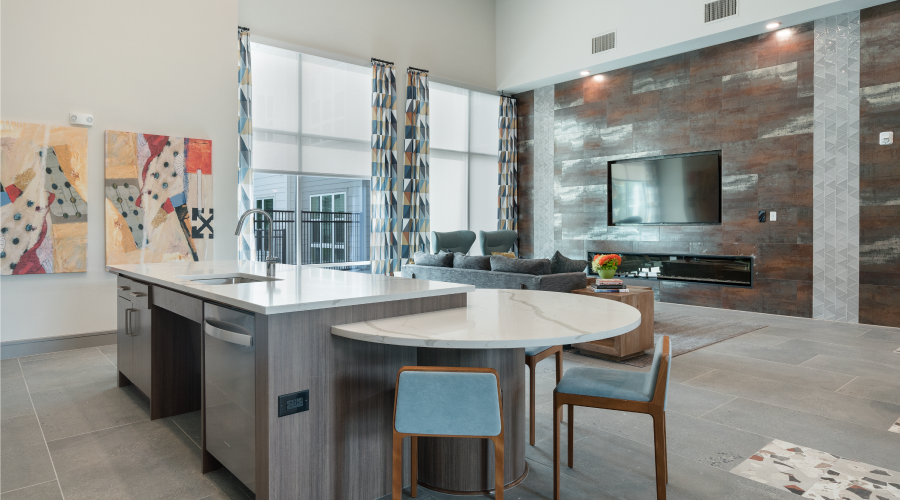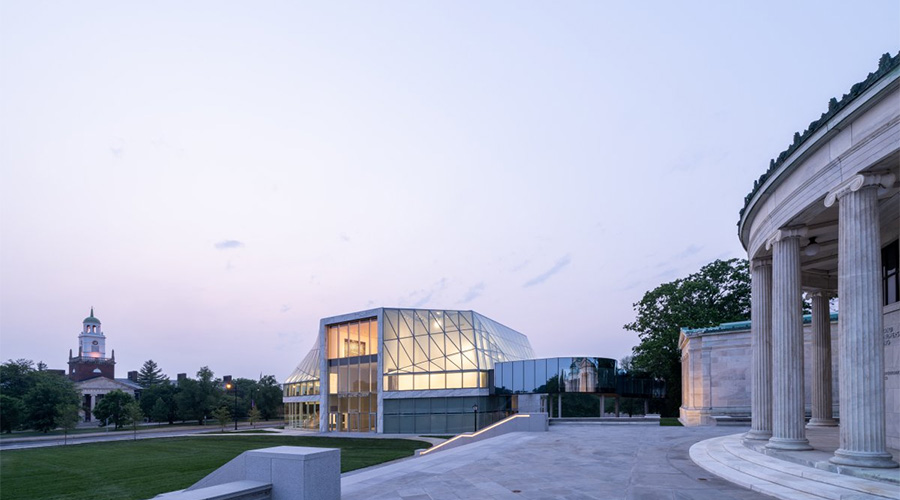The Logistics of Campus Renovation Projects
"If there were no students, life would be beautiful," quips Dernowski. But of course, academic buildings exist because there are. So planning around the students' and faculties' schedules, by most accounts, is the most difficult part of renovations projects. That's because it's nearly impossible to tell just how disruptive a renovation project might be.
"The biggest challenge in a renovation project is determining the value of time," says Dernowski. "For a corporate or industrial project, the value of time is precisely defined. You know exactly what one day costs. Not so in academia."
Often, avoiding academic disruption means doing projects during summer vacation. At Eastern Illinois University, Stephen Shrake, associate director, design and construction in facilities planning and management, is working on a large-scale renovation project to put sprinklers in all the dorms by a state-mandated deadline of 2013. Each summer, Shrake's team has planned to complete one or two dorms, depending on size, with bids awarded early in the year. The team also completes various other upgrades at the same time, new lighting, carpeting and fire alarm upgrades, for instance. All must be completed by the time students arrive in the fall.
"What we've learned is that our 75-day schedule isn't really a 75-day schedule," he says. "Some students always are moving back early." If the fire alarm system isn't functional, those students can't move in, he says. "We've learned we have to ask who the early arrivers are."
One thing Hardee has discovered on these fast-track projects is that the pre-planning stages must be done early. "We typically go through approval in March or April," he says. "Our schedule is really aggressive." In addition to the College of Business project, Hardee has also done summer renovation projects on a pharmacy building to add lab space, as well as a building called Jordan Hall, which was built in 1929. A project on an older building like that highlights the importance of doing as much front-end planning as early as possible, because there are always surprises.
"There will probably be something that will jump up and bite you," says Shrake. Many of the buildings at Eastern Illinois are 50 to 100 years old, he says. "So one of the biggest challenges is preparing as best you can to take care of unforeseen conditions."
Building in Flexibility
The best advice for dealing with unforeseen circumstances — finding asbestos below a floor or unearthing an impossibly tangled conduit configuration — is simply to build some flexibility into the plans. That may sound trite, but seasoned facility managers recommend always having enough money in contingency to handle the challenge, and even when schedules are tight, to schedule at least a few days cushion to deal with surprises.
It may be little consolation now if renovation projects reveal surprises, but one way to avoid this problem in the future is to make sure that all renovation projects are topped off with accurate as-built drawings.
It's something Justice requires at IPFW. "As a contractor is finishing, they must deliver completed as-builts," says Justice. "Additionally, these documents must be updated weekly during the projects." Justice says this is a lesson learned as his team has worked through several different renovations of IPFW's signature building — Kettler Hall, a 230,000-square-foot facility built in 1964. He says the building has gone through 15 to 18 major renovations over the years, so it's easy to see how updated as-builts would have been useful on such an oft-tinkered-with building.
When something unplanned happens on these tight-timeline, high-stress projects, it might be easy to fly off the handle and let the expletives fly. But instead, Hardee offers perhaps his most cogent piece of advice for other facility managers working on campus renovation projects. "Renovations projects are a team sport," he says. "Keep it light, and keep it fun,"
Facility managers know that no matter the amount of planning, something is bound to go awry. The response to these situations often can determine the success or failure of a project. "There'll be days, weeks, even months when things are frustrating," says Hardee. "But realize that people do make mistakes, and nothing is ever the end of the world."
Related Topics:












